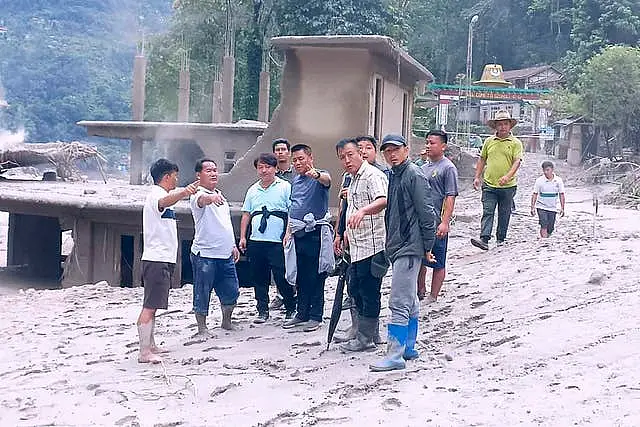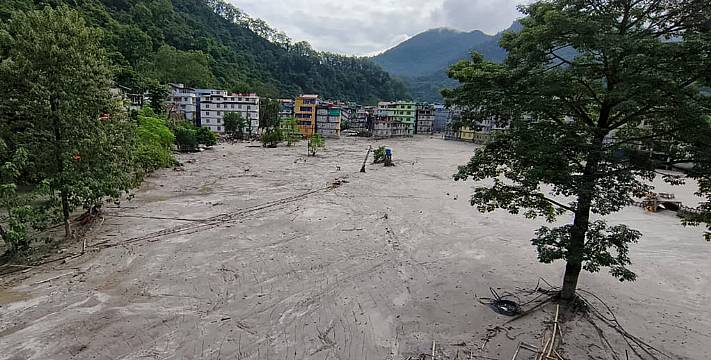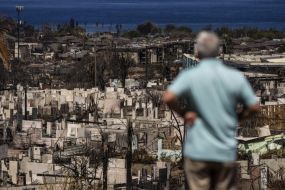Hundreds of rescuers dug through slushy debris and fast-flowing, icy water on Friday in a search for survivors after a glacial lake overflowed and burst through a dam in India’s Himalayan north – a disaster that many had warned was possible for years.
The flood killed at least 41 people, officials said on Friday, and forced thousands of people to flee their homes.
It began shortly after midnight on Wednesday, when Lhonak lake overflowed after a heavy rainfall.
Waters from the high mountain lake crashed into the largest dam in the state of Sikkim, cracking its concrete before cascading through towns in the Lachan valley below and sweeping away people, houses, bridges and an army camp.

The design and placement of the six-year-old Teesta 3 dam were controversial from the time it was built, part of an Indian push to expand hydropower energy.
Local activists argued that extreme weather caused by climate changes makes dam-building in the Himalayas too dangerous, and warned that the dam’s design did not include enough safety measures.
The deadly flood was the latest to hit north-east India in a year of unusually heavy monsoon rains.
Nearly 50 people died in flash floods and landslides in August in nearby Himachal Pradesh state, and record rains in northern India killed more than 100 people over two weeks in July.

On Friday, hundreds of rescuers from the army and national government worked their way through slushy debris and the fast-flowing river Teesta water in still-flooded towns.
They faced a challenging task, digging through cars, school buses and buildings buried in deep mud, while mobile networks and broadband connections have been disrupted in most of the district.
Officials said 100 people are missing, including 15 soldiers.
A report compiled by the Sikkim State Disaster Management Authority in 2019 had identified the lake the Teesta 3 dam was built to contain as “highly vulnerable” to flooding that could cause extensive damage to life and property in downstream areas, warning of the risk of flash floods that could break through dams.
The dam’s operator, and local agencies responsible for dam safety, did not respond to requests for comment on Friday.
Lhonak Lake has been rising quickly over recent years, as the glaciers that feed it melt faster due to climate change. A 2021 study by researchers in India, the United States and Switzerland warned that rising waters, and the steep slopes that surround the lake, made a catastrophic flood more likely.
Despite risks to dams due to increasing frequency of extreme weather, the Indian federal government aims to increase India’s hydroelectric dam output by half, to 70,000 megawatts, by 2030.
“We knew that this was coming,” said Gyatso Lepcha, general secretary of Affected Citizens of Teesta, an environmental organization based in Sikkim. “The same can happen with other dams also,” he wrote, in a statement that called for a safety review of all dams in the state.







